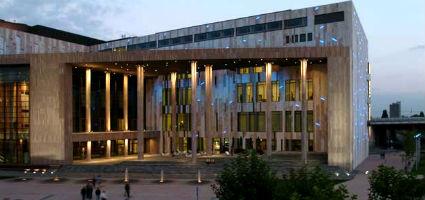2024. May 2. Thursday
Ludwig Museum - Museum of Contemporary Art - Budapest
 |
Address: 1095, Budapest Művészetek Palotája, Komor Marcell u. 1.
Phone number: (1) 555-3444, (1) 555-3457
E-mail: info@ludwigmuseum.hu
Opening hours: Permanent exhibition: Tue-Sun 10-18
Temporary exhibition: Tue-Sun 10-20 |
The exhibition has closed for visitors.
2014.06.12. - 2014.08.24.
Museum tickets, service costs:
|
Group ticket
(over 20 people 20% discount)
|
1000 HUF
|
|
|
Ticket for adults
(valid for the temporal exhibitions)
|
1200 HUF
|
|
|
Ticket for students
(valid for the temporal exhibitions)
|
600 HUF
|
|
|
Ticket for pensioners
(valid for the temporal exhibitions)
|
600 HUF
|
|
|
Ticket for families
(1 parent + max. 4 children)
|
1600 HUF
|
/ family
|
|
Ticket for families
(2 parents + max. 4 children)
|
2400 HUF
|
/ family
|
|
Ticket for adults
|
960 HUF
|
|
|
Ticket for students
|
480 HUF
|
|
|
Program ticket
|
600 HUF
|
|
|
Guide
|
4000 HUF
|
|
|
Guide
|
5000 HUF
|
The artistic development of the Italian art collector and artist Guglielmo Achille Cavellini / GAC (1914−1990) dates to the first half of the 1970s, when he came up with the 'movement' and 'self-historicization'. Self-historicization is actions born of egoism, self-glorification, rewriting art and history a la Cavellini, works of art and publications. With their unabashed honesty - they proved so successful that Cavellini became central figure in international relations and mail art in the end of the 1970s.
He made Artpoolt known all over the world of networkers the Hungarian, Central European cultural panorama he represented.